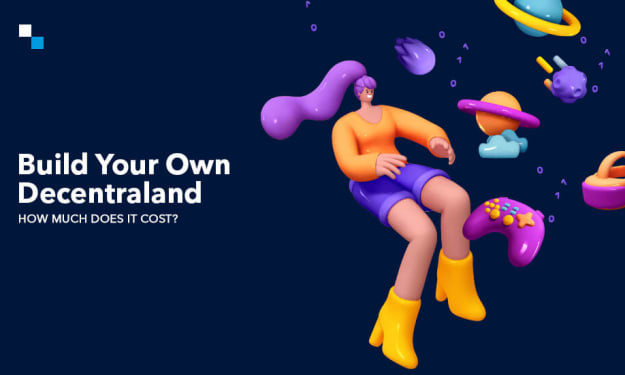The Next Chapter in Art History: The Rise of NFTs
Non-fungible tokens are changing the way we think about art ownership, provenance, and value.

The art world is a notoriously traditional one, with centuries-old institutions and practices that have been slow to change. However, the rise of non-fungible tokens (NFTs) is beginning to disrupt the status quo.
NFTs are digital assets that are stored on a blockchain and are unique and cannot be replaced. This makes them ideal for representing digital art, which is often considered to be difficult to own and collect.
In recent years, there has been a growing interest in NFTs for digital art, and some NFT artworks have sold for millions of dollars. This has led to a new wave of innovation in the art world, as artists and collectors explore the potential of NFTs to change the way we think about art ownership, provenance, and value.
**What are NFTs?**
NFTs, or non-fungible tokens, are a type of cryptographic token that represents something unique. They are stored on a blockchain, which is a distributed ledger that is secure and transparent. This means that NFTs cannot be counterfeited or tampered with.
NFTs are often used to represent digital art, but they can also be used to represent other unique items, such as collectibles, virtual real estate, or even tweets.
**How are NFTs used in the art world?**
NFTs are being used in a number of ways in the art world. One way is to sell digital art. This is done by minting an NFT for a digital artwork and then selling it on a marketplace. When an NFT is sold, the buyer receives the ownership of the NFT, which is stored on the blockchain.
Another way that NFTs are being used in the art world is to provide new ways for artists to interact with their fans and collectors. For example, some artists are offering exclusive content or experiences to NFT holders. This is helping to create a more engaged and interactive art community.
**The impact of NFTs on the art world**
NFTs are having a major impact on the art world in a number of ways. First, they are making it easier for artists to sell their work directly to collectors. This is because NFTs can be easily traded on decentralized exchanges, which means that artists can avoid the traditional art market and its high fees.
Second, NFTs are providing new ways for artists to interact with their fans and collectors. For example, some artists are offering exclusive content or experiences to NFT holders. This is helping to create a more engaged and interactive art community.
Third, NFTs are making it easier to track the provenance of digital art. This is because NFTs are stored on a blockchain, which is a secure and transparent ledger. This means that buyers can be sure that they are purchasing a genuine artwork, and they can also track its ownership history.
**The future of NFTs in the art world**
It is still too early to say what the long-term impact of NFTs will be on the art world. However, there is no doubt that they are already having a major impact. As NFT technology continues to develop, it is likely that we will see even more innovative ways to use NFTs for art.
For example, NFTs could be used to create virtual art galleries or museums. This would allow people to view and experience art from all over the world without having to leave their homes. NFTs could also be used to create new forms of interactive art that allow viewers to participate in the creation of the artwork.
The possibilities are endless, and it will be exciting to see how NFTs continue to revolutionize the art world in the years to come.
**Challenges and limitations of NFTs**
While NFTs offer a number of advantages for artists and collectors, there are also some challenges and limitations that need to be considered.
One challenge is that NFTs are still a relatively new technology, and there is a lack of understanding about how they work. This can make it difficult for artists and collectors to get started with NFTs.
Another challenge is that the NFT market is still very volatile. This means that the prices of NFTs can fluctuate wildly, which can make it difficult to predict how much an NFT will be worth in the future.
Finally, NFTs also have a environmental impact. The process of minting and trading NFTs requires a lot of energy,
Tips about NFTs in the art world.
Do your research. Before you invest in any NFT, it is important to do your research and understand the risks involved. This includes understanding the artist, the artwork, and the NFT marketplace where you are buying it.
Start small. Don't invest more than you can afford to lose. The NFT market is volatile, and there is always the risk of losing money.
Be patient. The NFT market is still in its early stages, and it can take time to see a return on your investment.
Diversify your portfolio. Don't put all your eggs in one basket. Spread your investment across a variety of NFTs to reduce your risk.
Be aware of the environmental impact of NFTs. The process of minting and trading NFTs requires a lot of energy, which can have a negative impact on the environment.






Comments
There are no comments for this story
Be the first to respond and start the conversation.